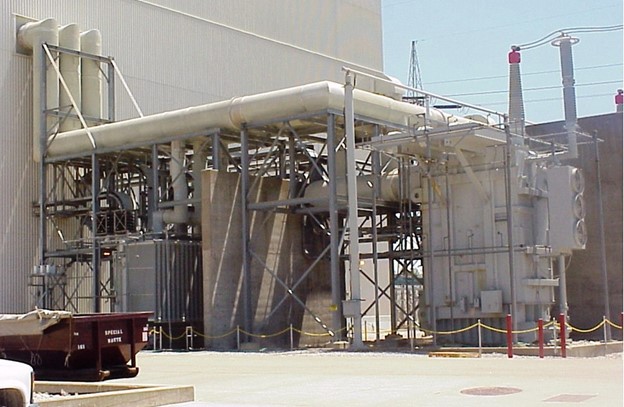Electrical bus duct system: One component that is often overlooked as being system critical is the electrical bus duct system. The bus system is the plant’s main vessel of power distribution, carrying large amperage currents from the generator to a step-up transformer. In other words, the bus system acts like a giant extension cord. Although the value of the electrical bus duct system may seem minimal when compared to that of the generator or the transformer, the bus duct system plays a vital role in the plant. Consider it the lifeline between both high value components; if a failure occurs, there is a good chance that the connected components will be impacted. Electrical bus duct systems do not have redundancy. Because they are custom designed for each plant, they also do not have a quick fix or replacement solution readily available.
To make matters worse, the pandemic has broadly impacted the global supply chain, introducing significantly longer lead times, especially for systems that have obsolete or hard-to-procure replacement components. As such, the need for having an ironclad contingency and a proactive preventative maintenance plan has never been more important. Even so, some plants have adapted a run-to-failure strategy, known as reactive maintenance. Although this strategy can cost less in the short term, waiting until something fails can cost more in the long run. Working to a reactive strategy can significantly lower efficiency and further contribute to bottom-line profit losses if an unplanned outage or catastrophic failure occurs. In fact, studies have shown that running to failure costs an average of four times as much as implementing a routine proactive preventative maintenance schedule.
Offline inspections: Industry best practice recommends bus duct maintenance yearly, at every scheduled plant outage, or at a minimum of every 18 to 24 months. Over the past few years, however, online monitoring options have exploded in the marketplace, adding to the misconception that offline inspection maintenance can be postponed. Generally, these diagnostic reports provide only provisional or non-definitive findings that cannot be confirmed unless an offline inspection is performed. Thus, a plant’s budget is spread across two activities, with partial results from one versus the other—offline inspection—that provides certain results.
A thorough offline inspection can identify with certainty many things, including but not limited to poor installation or system design, cracked insulators, localized overheating, corona/arcing, condensation/water intrusion, loose connections, loose/missing/inappropriate hardware, dust/dirt build up, debris/foreign material, improper grounding, cracked weld joints, poor or inadequate insulation, and lack of proper silver plating. Once these abnormalities are discovered, proper repairs and/or upgrades can be performed to ensure that the system is running in optimal condition.
Routine PM: Routine preventative maintenance is not only a cost-effective way to extend the life of electrical assets, but also a critical task in minimizing the risk of a forced outage and bodily harm to on-site personnel.
Mohsen Tarassoly is the sales engineer director at Electrical Builders Inc. He has more than 30 years of experience in the domestic and international power industry, working with most major utilities, the engineering, procurement, and construction business, and engineering entities.


